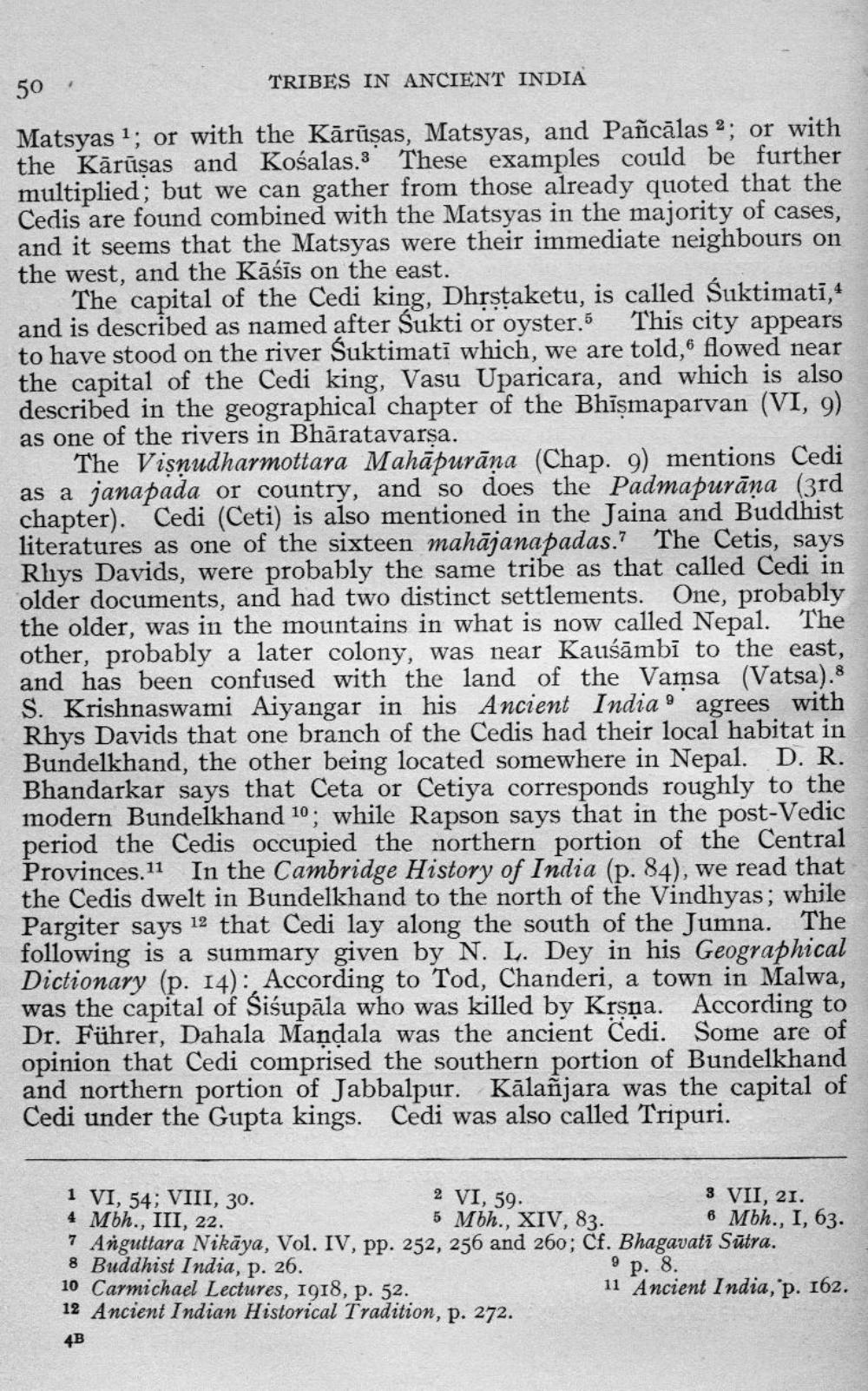________________
50
TRIBES IN ANCIENT INDIA
Matsyas 1; or with the Kārūsas, Matsyas, and Pañcālas 2; or with the Kārūsas and Kośalas. These examples could be further multiplied; but we can gather from those already quoted that the Cedis are found combined with the Matsyas in the majority of cases, and it seems that the Matsyas were their immediate neighbours on the west, and the Kāśīs on the east.
The capital of the Cedi king, Dhrstaketu, is called Suktimati, and is described as named after Sukti or oyster. This city appears to have stood on the river Suktimati which, we are told,6 flowed near the capital of the Cedi king, Vasu Uparicara, and which is also described in the geographical chapter of the Bhīşmaparvan (VI, 9) as one of the rivers in Bhāratavarşa.
The Visnudharmottara Mahāpurāna (Chap. 9) mentions Cedi as a janapada or country, and so does the Padmapurāna (3rd chapter). Cedi (Ceti) is also mentioned in the Jaina and Buddhist literatures as one of the sixteen mahājanapadas.? The Cetis, says Rhys Davids, were probably the same tribe as that called Cedi in older documents, and had two distinct settlements. One, probably the older, was in the mountains in what is now called Nepal. The other, probably a later colony, was near Kauśāmbi to the east, and has been confused with the land of the Vamsa (Vatsa).8 S. Krishnaswami Aiyangar in his Ancient India 9 agrees with Rhys Davids that one branch of the Cedis had their local habitat in Bundelkhand, the other being located somewhere in Nepal. D. R. Bhandarkar says that Ceta or Cetiya corresponds roughly to the modern Bundelkhand 10; while Rapson says that in the post-Vedic period the Cedis occupied the northern portion of the Central Provinces. 11 In the Cambridge History of India (p. 84), we read that the Cedis dwelt in Bundelkhand to the north of the Vindhyas; while Pargiter says 12 that Cedi lay along the south of the Jumna. The following is a summary given by N. L. Dey in his Geographical Dictionary (p. 14): According to Tod, Chanderi, a town in Malwa, was the capital of Siśupāla who was killed by Krsņa. According to Dr. Führer, Dahala Mandala was the ancient Cedi. Some are of opinion that Cedi comprised the southern portion of Bundelkhand and northern portion of Jabbalpur. Kālañjara was the capital of Cedi under the Gupta kings. Cedi was also called Tripuri.
1 VI, 54; VIII, 30.
2 VI, 59.
3 VII, 21. 4 Mbh., III, 22.
5 Mbh., XIV, 83. 6 Mbh., I, 63. 7 Anguttara Nikāya, Vol. IV, pp. 252, 256 and 260; Cf. Bhagavati Sūtra. 8 Buddhist India, p. 26.
9 p. 8. 10 Carmichael Lectures, 1918, p. 52.
11 Ancient India, 'p. 162. 12 Ancient Indian Historical Tradition, p. 272.
4B




